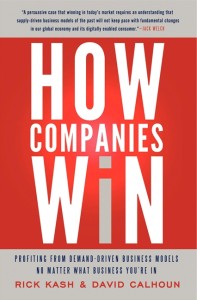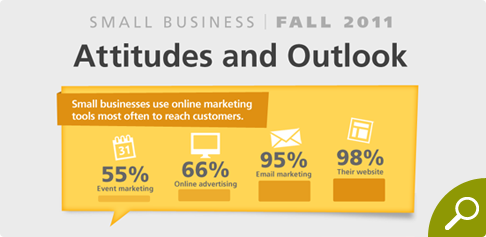 One of my favorite CIOs is Tom Murphy, who long headed IT at AmerisourceBergen and who is now in transition to a new role (any company will be lucky to have him). Tom addressed the CIO Solutions Gallery at the Fisher College of Business at Ohio State University this morning on the subject of the role of CIOs in social media. Earlier in the day, a show-of-hands poll of his audience had indicated considerable skepticism among the audience about the value of social business in general and a clear sentiment that CIOs should not be closely involved with social business other than as gate-keepers. In light of that reluctance, I found Tom’s comments particularly refreshing. What follows is a more-or-less verbatim transcript of what he said. I hope other CIOs will listen:
One of my favorite CIOs is Tom Murphy, who long headed IT at AmerisourceBergen and who is now in transition to a new role (any company will be lucky to have him). Tom addressed the CIO Solutions Gallery at the Fisher College of Business at Ohio State University this morning on the subject of the role of CIOs in social media. Earlier in the day, a show-of-hands poll of his audience had indicated considerable skepticism among the audience about the value of social business in general and a clear sentiment that CIOs should not be closely involved with social business other than as gate-keepers. In light of that reluctance, I found Tom’s comments particularly refreshing. What follows is a more-or-less verbatim transcript of what he said. I hope other CIOs will listen:
To me this looks very much like the early days of the Web. Everybody figured they had to be out there but they didn’t know what it meant. We’re going through a lot of the same machinations. In the early days of the Web you saw consumer packaged goods firms throwing up Web sites without a lot of idea what they were trying to accomplish. The same is happening with the social space, but it’s happening so fast.
The speed of social media today is stunning. I think the biggest mistakes we’re making are around the consistency of the message, the brand quality and the way we have traditionally done things, which is a one-way dialog. By definition, social media is a two-way dialog between your customers and your employees. I have seen more mistakes with people jumping into the social media space without understanding this simple precept. This is a two-way dialog and someone needs to be handling that conversation.
Also, if you’re going to ask for opinions, be prepared for what you get. You need to be able to react to requests and to complaints. You turn this thing on and you get hundreds or thousands of dialogs coming in. How effective is the organization at responding to that? Do you have the tools to effectively engage in this dialog?
Social media is not a technical expertise. It’s a cultural expertise. Right now the pendulum is swinging more and more toward social media as the tool to communicate. It is a tool, but companies should not lose that direct contact with customers. There’s a risk of losing face-to-face engagement with customers and employees.
The other thing I worry about is the explosion in data collection. All this dialog has created a mountain of data and we have to figure out how to apply social analytics and who’s got the toolsets that can help us. How do we collect all this data and apply tools in a space that’’s moving so fast that people expect immediate responses. How do we do that while protecting the integrity of the brand?
Most of us do not have the skills to collect and understand the data we’re collecting. They’re spending a lot of money on this and there’s a lack of understanding about the value we’re getting.
The other issue I worry about is security. Social media doesn’t introduce new risk in itself, but it does present the opportunity to identify risks earlier. However, it also creates the opportunity to detect problems within the organization. If I can listen in on my associates’ dialogs, I can analyze it and identify potential risks in the organization before it’s apparent. I can identify individuals who may present a threat to the organization. Now there’s a big leap between doing that and taking action without evidence, and I’m not advocating a Big Brother approach, but I think a big part of the social future will be companies’ ability to listen in and understand what employees are talking about.
Organizations that are going to optimize social are going to need to make organizational changes, put tools in the hands of their employees and then get out of the way. But that’s not really a big leap. The fallacy of our current situation is that you think you have control and you don’t.
As the CIO I don’t want to own this space but I want to enable it. This is a fabulous opportunity to take your relationship with the CMO to the next level.
This is one in a series of posts sponsored by IBM Midsize Business that explore people and technologies that enable midsize companies to innovate. In some cases, the topics are requested by IBM; however, the words and opinions are entirely my own.



